Playful Ant 10 – Naomi Moriyama (Healthy food and wellness life seeker / Nonfiction writer)
What do you think of when you hear the word “New York”? Is it a melting pot of races known as the “Big Apple” or perhaps the image of a city filled with energy, where people gather in pursuit of the American dream?
Then, how about “Finland”? Yes, it is the setting of the Moomins. As indicated by the appearance of Snufkin, who loves to lead a nomadic lifestyle and travel freely, many people may associate with simple, quiet and mysterious images.
In this article, I introduce Ms. Naomi Moriyama, a nonfiction writer who has been proposing new values by connecting three places as Japan, New York and Finland on different continents through “food for health.” Naomi was a guest judge on the American TV show “Iron Chef” and appeared on America’s leading morning news show “NBC Today,” where she discussed the appeal of Japanese food with Katie Couric, who is considered to be one of the most authoritative newscasters in the United States. Her work “Japanese Women Don’t Get Old or Fat: Secrets of My Mother’s Tokyo Kitchen” which she co-authored with her husband William Doyle, has been translated into 21 languages and sold around the world as a classic book that has made the world aware of the excellence of Japanese home cooking.
Naomi has contributed in no small way to the Japanese food boom that has spread throughout the world. However, she is perhaps one of the least known for her contributions in Japan, where she was born and raised. I hope that many readers will take this opportunity to learn about her contributions and her journey so far.
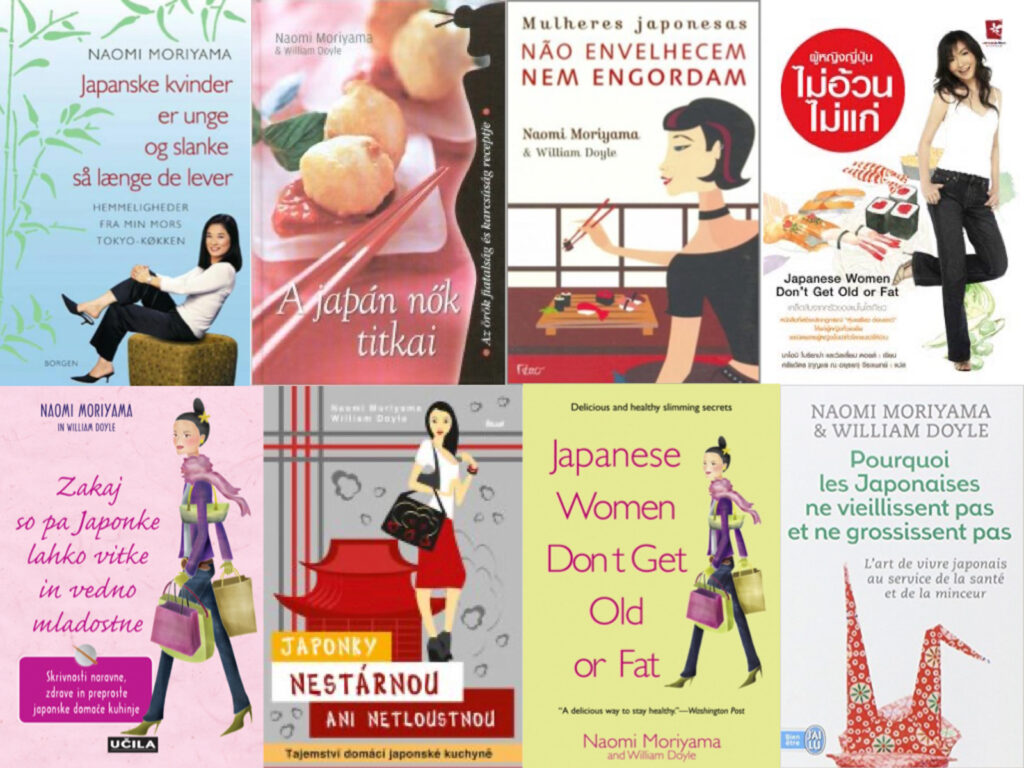
Rediscovering the beauty of Japan only because being outside of Japan
Naomi: My father was born in Mie Prefecture, but moved to Tokyo during the high economic growth period and worked for a big Japanese corporation. My mother was a housewife. I was born in Tokyo and grew up in Yokohama and Kawasaki.When I graduated from college, Japan was at the dawn of equal employment opportunities for men and women. It was a time when there were still high hurdles for women to seek a career in the society. Therefore, I decided to join the Tokyo branch of a foreign advertising agency, partly because I had a strong global orientation after having studied abroad while still in school, and partly because I was interested in communicating ideas. As an account executive in charge of a global consumer goods manufacturer, I spent my fulfilling days learning American-style marketing strategies and methods.
After working there for about two years, I requested an overseas assignment and was fortunate to be transferred to the New York headquarters. I became an account executive there for the global consumer manufacturer that I had worked on in Japan, and was able to learn a lot from this busy and demanding experience.
When I was considering my next career step, I heard that a Japanese general trading company was launching a project to distribute live NHK-produced program content in the United States, and I had the opportunity to get involved in that project in New York. It was the early 1990s, the time when Japan was being praised as “Japan as No. 1” around the world for its tremendous economic growth. On the other hand there was also some resentment towards Japan for the act of buying American symbols with money, represented by the acquisition of the Rockefeller Center building by a Japanese company. Little Japanese information had taken root in the United States whereas a lot of American information was imported into Japan. That’s the reason I empathized with NHK’s goal of “bringing Japanese culture and information to the U.S. in a grassroots manner through TV dramas, news, and cooking programs”, and found a purpose in it.
Later, I worked in the new business department of HBO, an American cable TV broadcaster, where I was responsible for marketing, distribution contracts and budget management. I remember thinking that I loved working in an entrepreneurial environment, launching new brands and services within large companies since my days at the ad agency.
Then, I founded a boutique consultancy which provided marketing and NY-based creative services to Japanese and American global companies. Though I spent my days devoting myself to the challenging but rewarding work of building bridges between Japan and the U.S., running a small but independent company, and enriching my career in the field of communication, I was still unable to define my purpose in life other than achieving the profit of the business and the outcomes of my work, and had yet to find the meaningfulness of life in a deeper dimension.
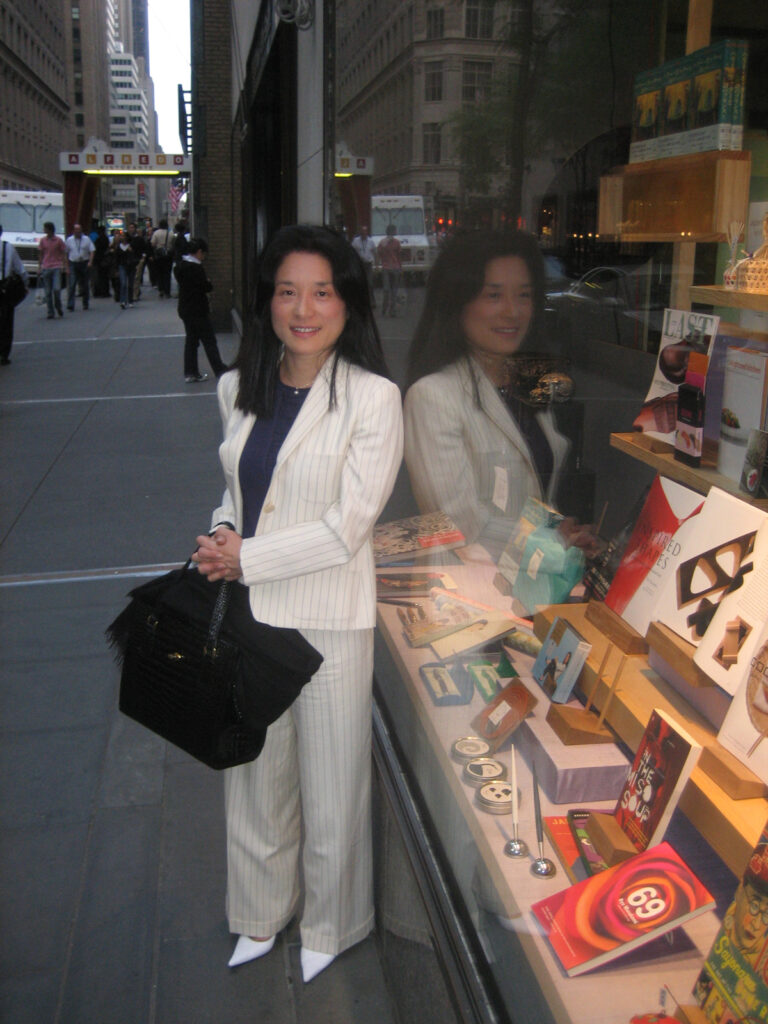
Making a big hit all over the world by sharing Japanese food tips and tricks that anyone can do.
Naomi: After the year 2000, my American husband William and I went to Japan for a week to attend my sister’s wedding and stayed at my parents’ house. While eating Japanese food prepared by my mother, who is an excellent cook, every day, William said happily, “I have more energy and I feel so much better! I’ll keep this diet.” After returning to Manhattan, he actually began to eat simple Japanese food without relying on me. Japanese cuisine, especially sushi, was already booming in the U.S., and take-out sushi was available in supermarkets.
Inspired by William’s words, I decided to cook sometimes, remembering the home-cooked meals my mother made. I asked her for the recipes, but she told me, “Recipes are stored in my head, not in writing.” So, I spent months on gathering information from my mother over phone and facsimile and reconstructing the recipes.
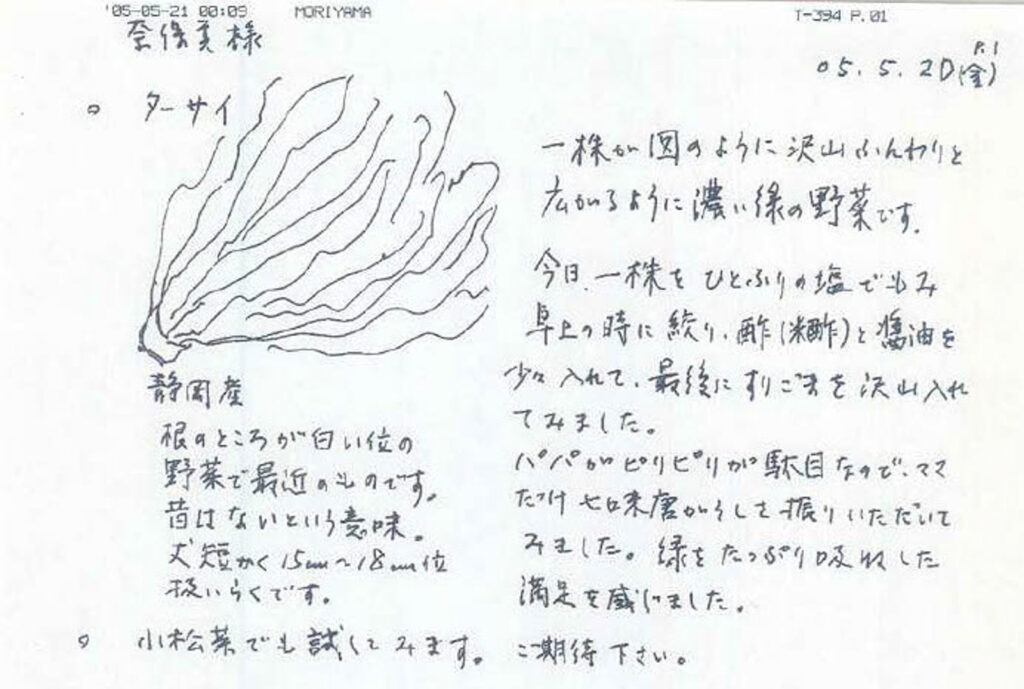
At the same time, we began reading many articles on diet and culture and came across some startling data. According to a WHO study, the obesity rate for Japanese women was only 3% whereas that for American women was 34%. Additionally, the life expectancy for Japanese women was 85 years, the longest in the world. I thought that the essence of Japanese food had a great influence on this fact.
Then, I remembered that when I had studied in the U.S., I had gained weight rapidly within my first 4 to 5 weeks and could not wear all the clothes I had brought with me, but after returning to Japan, I was able to slip into those clothes simply by eating my mother’s home cooking for a few weeks.
Furthermore, my husband William was obese without being aware of it before he went to Japan. But he lost about 15 kilograms and felt much better after returning to New York and following the Japanese diet. That was a benefit he never expected or hoped for.
But, it did not mean that we always ate traditional Japanese food in a formal manner. I wanted to share with the American people “tips on how to eat delicious and healthy food that anyone can easily implement” while incorporating the essence of Japanese diet. I myself had little time for cooking in my work-centered life, had never done any serious cooking, and it was difficult to obtain special Japanese ingredients in New York. I wanted to promote a diet that naturally improves people’s physical condition as they enjoy delicious food, rather than a fad diet system or an effort to lose weight. As people in New York and California already had an image that Japanese food, especially sushi, was cool, I had a hunch that our message would be easily accepted.
“Japanese Women Don’t Get Old or Fat: Secrets of My Mother’s Tokyo Kitchen”, which Naomi describes as “a collection of tips for cooking at home on a daily basis by unravelling the recipes stored in my mother’s head” was released in 2005 and immediately attracted a great deal of attention. As mentioned at the beginning of this article, the book was introduced in various media not only in the U.S. but also around the world.
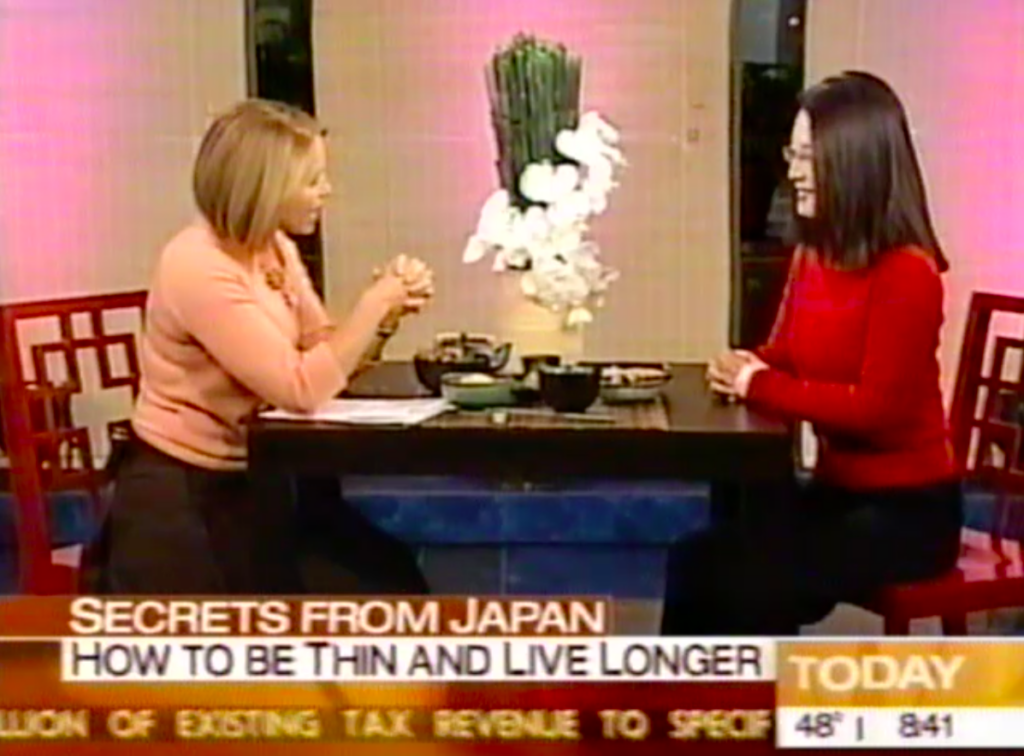
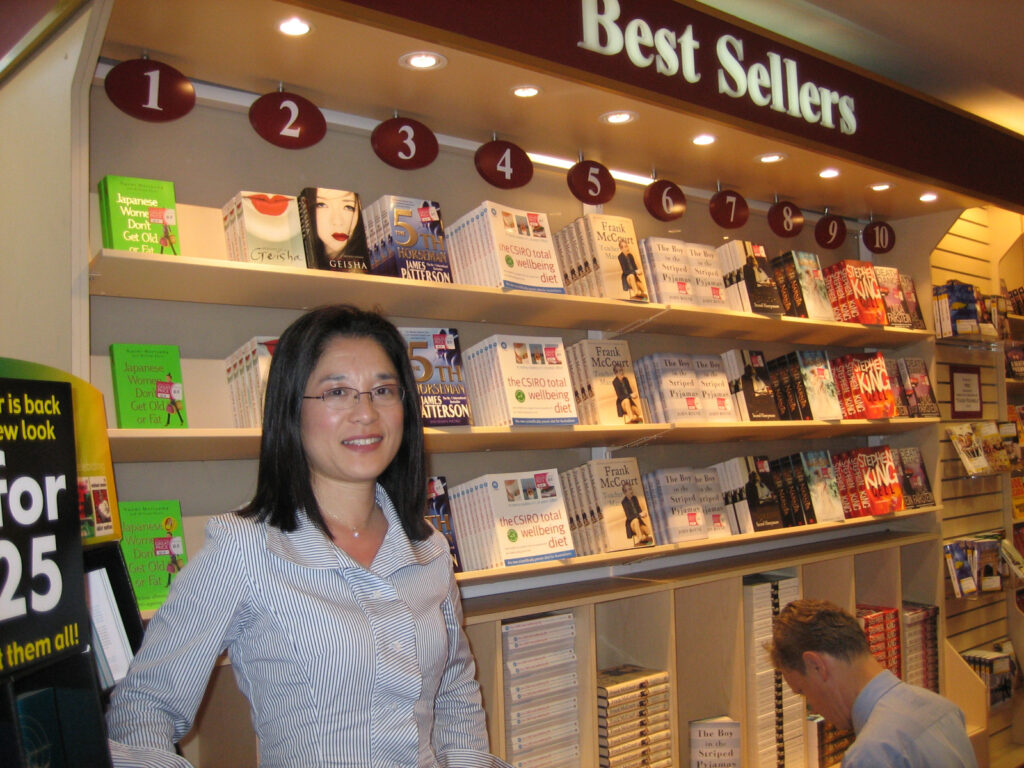
Finding the most advanced way of life at the edge of the world, away from the center of the economy
Thereafter, Naomi has become an activist for the promotion of a healthy Japanese diet, written two new books on the benefits of Japanese food for the world to know and enjoy, and lived an exciting life in Manhattan, the heart of New York City, working and raising her son at full capacity. It was in the spring of 2015 when her husband William, who had become a best-selling author with books such as “Inside the Oval Office,” talked about the idea of living in a rural area of Finland as a Fulbright Scholar. Naomi recalled that she honestly had very mixed feelings.
Naomi: I knew nothing about Finland other than that it was somewhere in Northern Europe and that it had good schools. My husband has a job doing research at a Finnish university. My son, then seven years old, has a place at school in Finland. But what am I supposed to do?… That was how I felt when I was first asked about going to Finland, in a nutshell. It was also a turning point in my life when I wanted to return to work after several years as a full-time mother, and Finland was an unknown frontier that was far from reality for me. Finally, I told William that I wanted the option of returning to New York on my own if I could not accept the freezing cold, darkness, or loneliness in Finland, and got his agreement.
Naomi’s fears whether she could really make it in such a countryside life in a foreign country after having spent most of her life in the big cities such as Tokyo and Manhattan turned out to be completely groundless. Soon after moving to Finland, Naomi fell in love with the country’s rich nature and warm community.

Naomi: The place where we settled in was a city named Joensuu, the capital of North Karelia Province, a city on the edge of Finland, the easternmost edge of Europe. As I wanted to learn about local cuisine taking this opportunity living in the new place, I got familiar with people from the Martha Association, a local NPO, and they taught me about local cuisine. Martha has more than 40,000 volunteers with its purpose to support socially isolated and troubled people to lead independent lives through education and knowledge sharing about food, cooking, nutrition, gardening, and household budgeting.
The first day I visited the Martha office, the Martha people suddenly told me that they gather wild mushrooms and berries in the forest among many other activities, and promised to take me there.
Until then, I had thought that buying food directly from local farmers at green markets was the best way to get food. So, I was surprised when they pointed to a neighboring forest and said, “You can harvest mushrooms, blueberries, and other edibles in the forest, can’t you?” as if it were a matter of course. I was culture shocked in a good way, thinking “what a wonderful world this is!”
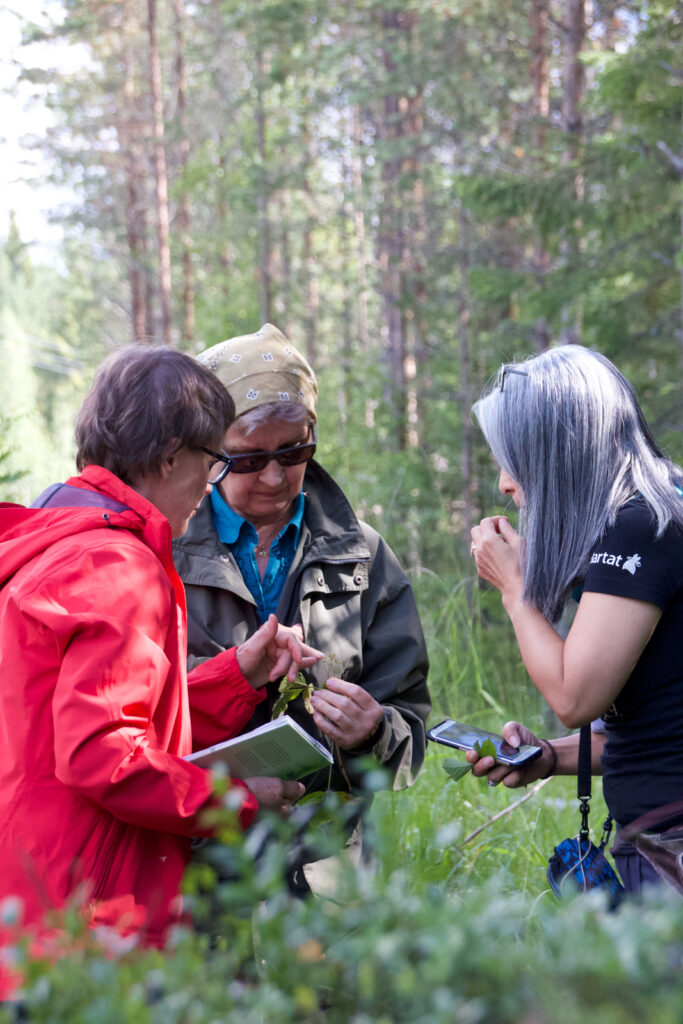
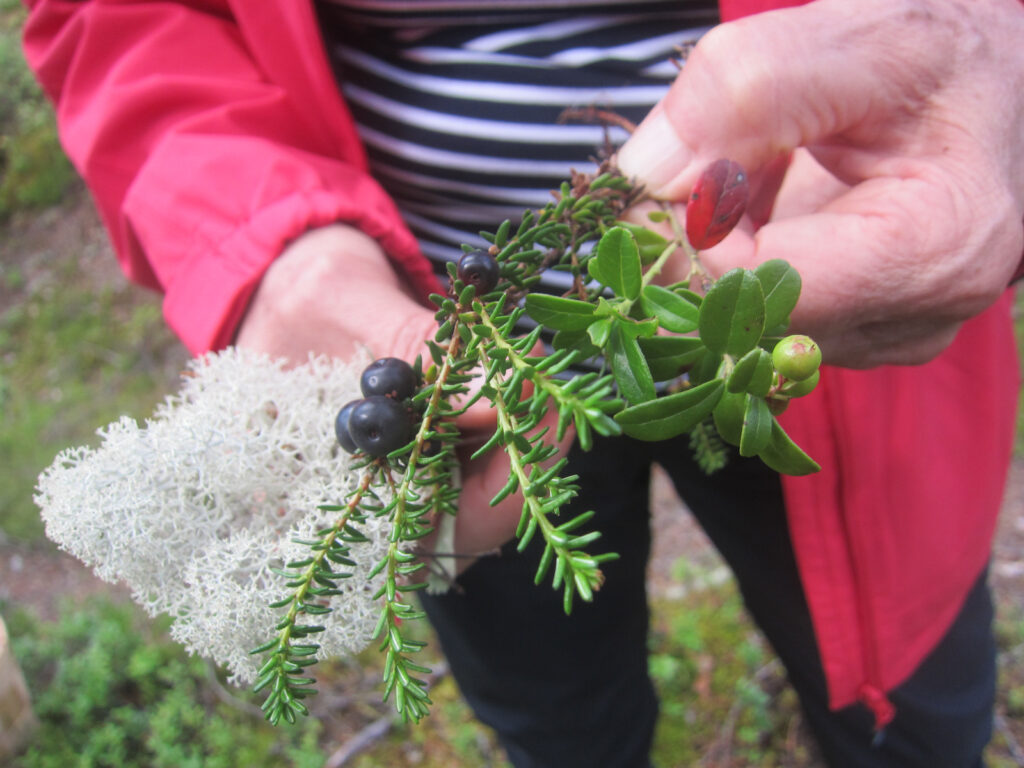

Finland is the largest forested country in Europe, with forests covering about 70% of its land area. In 2021, based on her own experiences living in Finland, Naomi co-authored with William a book “The Sisterhood of the Enchanted Forest: Sustenance, Wisdom, and Awakening in Finland’s Karelia,” which is full of hints to live wisely in the coming age, covering the lives of women who have inspired her, coexistence with nature, and Finnish social structure.
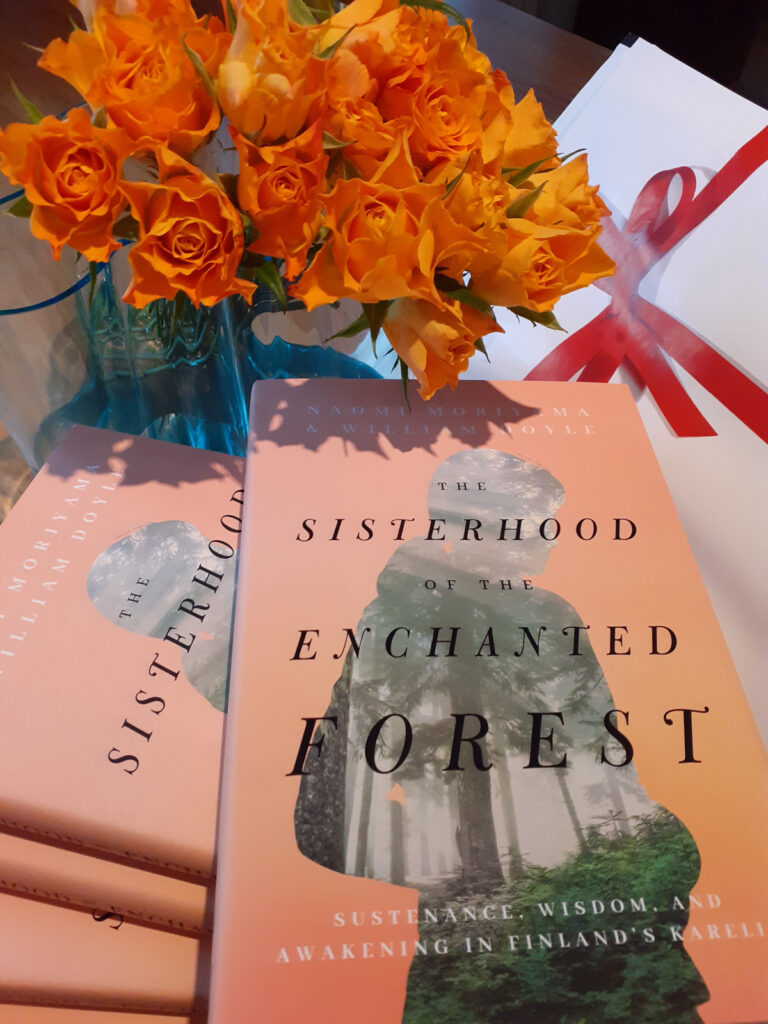
Naomi: Food wisdom which Martha in Finland shares is extremely simple, like the ones passed down from grandmothers for generations around the world. It also connects to my mother’s message “Being healthy is the most important thing.” It is the wisdom that in order to stay healthy, good food is important, and in order to eat well, it is important to learn how to get fresh, in-season, inexpensive ingredients and cook them well. I am keenly aware that this kind of thinking is so important both in the past and even more so for today’s society.
Finland declared independence from Russia in 1917. I feel the sense of “let’s all create a society that we think is good for us” is a shared value among the Finns. Since the population is not so big with 5.5 million, I feel that there is a strong sense of everyone working together, men and women trying to bring out the best in both sides, and democracy in the true sense is making progress. In fact, Finland is ranked second out of 146 countries for having the lowest gender gap between men and women in The Global Gender Gap Report 2022 published by the World Economic Forum. Japan, on the other hand, is ranked 116th, the lowest level among developed countries and lower than South Korea, China, and other ASEAN countries among Asian countries, a situation that makes me want to cover my eyes.
In addition, in the United States and other developed countries, I feel that many people define happiness mainly based on the economic aspect of whether or not they have money. But Finland has been ranked as the “No. 1 happy country” for six consecutive years in the “The World Happiness Report” published by the United Nations’ Sustainable Development Solutions Network. The criteria by which this report measures happiness are 1. GDP per capita, 2. social support, 3. healthy life expectancy, 4. freedom of life choices, 5. tolerance/generosity, and 6. perception of corruption. For reference, the U.S. and Japan are ranked 15th and 47th, respectively in the 2023 report.
I have come to feel that the people who live here practice a “smart way of life” that can be considered “cutting edge” in the world although the forested province of North Karelia is a rural region on the “edge” of the country.
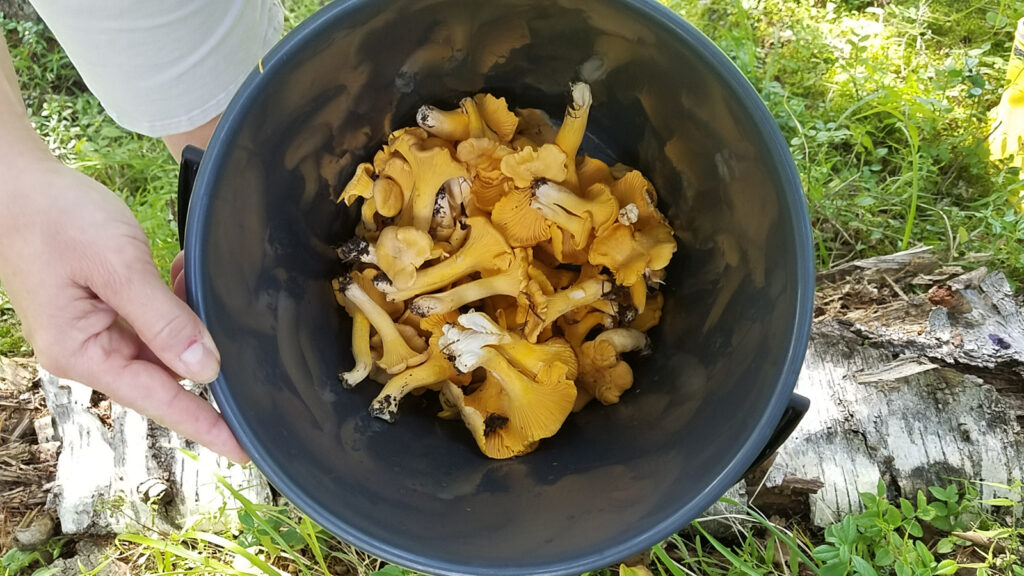

In the midst of Finland’s nature, which boasts the cleanest air and water in the world, people search for wild edibles, pick them with their own hands, and cook them for dinner that night. Isn’t it the best experience of “healthy gastronomic luxury”? This lifestyle is a luxury that people can’t buy with money. This is also a timeless wisdom of living, as the food is preserved for the long winter months.
What’s more, I imagine that there are countless such truly rich ways of living in the nature-rich parts of Japan, and I dream of traveling there and experiencing them someday in the future.
Bring in perspectives from outside and have people rediscover the value of Japan
Thus, Naomi left Japan in her late 20s, built a career in New York, and found a new way of life in Finland. She’s been living in Helsinki with her family since 2020. So, what’s her next path? From now on, she would like to connect her experiences and actively disseminate her insights not only in English but also in Japanese.
Naomi: There is much we can learn from the “truly equitable society” that the Finnish people have been building since their independence. Aspects of their cultural and social structure like high gender progress and work-life balance allow me to live comfortably in Helsinki today. I would be happy if I could share some tips from the people of this country with the people of my home country, Japan.
Connecting nature and wellness is one of my very important themes right now. I worry that people living in developed countries are too remote from nature in their daily lives to feel a sense of imminent crisis even though food and environmental problems are actually critical on a global scale. Because of this situation, I hope to pursue activities with an awareness of “wellness” that will bring the hearts and minds of individuals and the global environment into a better state.
“Food” has been a theme for me ever since I wrote those books on Japan-style eating, and “nature” is something I have become newly and strongly aware of here in Finland. Through relationships with food and nature, I hope to share with people in Japan insights and practical ideas on “how to realize a better state equally for both the individual and the earth.”
I also believe that through the lens of my long experience and observation of non-Japanese cultures, people who have lived in Japan for many years may rediscover values that are too familiar and taken for granted to notice.
For example, in Japan, the healing effect of “Shinrin Yoku (forest bathing),” in which people bathe in the natural air emitted by the forest, was advocated in the 1980s. I myself have been practicing this forest bathing in Finland, walking and foraging in the forest, and realizing its effect.
In the past few years, the term “Shinrin Yoku (forest bathing)” has become as universally used in the global arena as ones like “Omakase” and “Ikigai,” and has become a familiar wellness practice throughout the world. I believe that this forest bathing is one of the keys to creating a synergy effect in promoting the health of mankind and the earth, as more and more people around the world experience and realize the value of nature and incorporate coexistence with it into a part of their daily lives.
In the process of traveling back and forth between Japan, the U.S., and Finland, I think I have gained a mindset that allows me to discover delicious and healthy cuisine, garden, forage for food, and build relationships with people wherever I am. This mindset is actually something that anyone can put into action, not only in Finland, but in Japan, the U.S., or anywhere in the world. I believe we can build sustainable communities wherever we are in the world through such a mindset, and I hope to communicate that value to as many people as possible.

Post-Interview Reflection
I strongly agree with Naomi’s view that it is on the “edge away from the center” that we can find hints for living a rich life in the new era. The name of the company I represent, EdgeBridge, has three meanings. One of those is “to create new awareness and value by bridging knowledge at the edges of the world.
Solving social issues such as poverty and malnutrition while at the same time creating new business market opportunities… With such a mission, I, along with members from the headquarters of my client, a global consumer goods company and an international NGO, have spent the past decade traveling and immersing myself in cities such as Nigeria, Mozambique, India, and Bangladesh, as well as in “remote areas” such as remote villages far from their centers and urban slums far from ideal safety and sanitary conditions.
People’s lives were certainly different from what I and the client members were used to in urban areas of developed countries, and there were in fact many inconveniences. At the same time, however, there were also unexpected comforts, in a sense, that we rarely find in our living environment.
Let’s take my experience staying at a village a few hours away from Mumbai, India, as an example. In this village, where there was no electricity, as the sun set, the smell of cooking began to emanate from many houses. After a while, I heard the cheerful sounds of people talking and laughing as they enjoyed their meals. By the time night fell, the quiet singing of the people was carried to my tent on the wind. I still strongly remember that I felt a strong sense of richness beyond description that moment.
During my two-week stay, the old lady of the village took her time to prepare the delicious bean soup over a wood fire, and I never got tired of it.
The day before I left the village, I was served a meat dish for the first time during my stay. After I asked the old lady where she got it, I noticed that one of the chickens that had been running around the house was gone. I literally tasted it to the bone, feeling sorry and grateful for the chicken that lost its life because of me. It may sound an exaggeration to say that experience was to connect the life of a chicken to my own life, but I felt the exchange of life between living things and the happiness of being kept alive by it with no doubt. Through these awakening experiences in such remote areas, I and my clients acquire new values. And once those values are installed, they continue to live in our bodies even if we change locations.
The more you try to enjoy economic wealth and social status, the more difficult you may find it to enjoy spiritual happiness. When you find yourself in such a situation, get out of your comfort zone and visit the “edge,” and I’m sure you will discover something new.
Stay Playful.
『The Playful Ants that change the world』
In an ant society, you can easily identify the herd of “Worker Ants”—the textbook definition of ants, the ones who continuously carry the food. If you take a closer look, you may notice that there’s a different group of ants walking about playfully in their own world. These are “Playful Ants”—ants and thanks to their curiosity, they at times stumble across an unexpected feeding ground or detect sudden threats in advance allowing them to warn the colony of danger in advance.
In this interview series, I introduce interesting lifestyles and work styles of different “Playful Ants”, in order to help incubate them into this world.
Each human being is as small as an ant. However, if each ant pursues his or her own path purposefully and playfully, that path can connect to an opportunity to explore and create something new. That can turn into the power to change the world in its own way. I’ve come to believe so after spending many years on designing and leading practical innovation projects, and working with many global and Japanese corporations as a consultant.
Yasuhiro Karakawa (Playful Ants Incubator)
With a purpose of “incubating Playful Ants both in the corporations and the society” Yasu has been leading practical innovation projects with global corporations in more than 10 countries while also serving as a strategy advisor and a guest lecturer.











